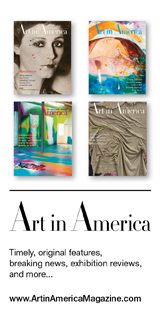"Red: The History of a Color" by Michel Pastoureau
DeTnk Bookshelf
It is now hard to imagine, but before the mid-1960s most books, and not only on art historical subjects, appeared without a speck of color. It was not as if color printing technology was unavailable, but we had been conditioned by the circulation of millions of black-and-white photographic images, starting in the middle of the 19th century, to what the French historian Michel Pastoureau calls a "black-and-white reality." Cinema extended this domination into the mid-20th century. Who can imagine Ingmar Bergman's The Seventh Seal in color?
Pastoureau traces the hegemony of black and white to 19th-century Protestant capitalists in whose hands were the great industrial and financial enterprises. Even when the chemical industry could produce any color desired, the first objects of mass production—household appliances, telephones, fountain pens, automobiles—were in black, gray, or brown. Henry Ford is supposed to have rejected any color but black for his Model T. This moralizing of color, as we learn here, has a long history. The changing status of red from prehistoric times to the present tells much about the development of a particularly Western sensibility.
Red represents the fourth installment of a series that began in 2001 with Blue and continued with Black and Green, each bearing the same subtitle. (The next volume in the series, also to be published by Princeton, will consider yellow.) Pastoureau does not analyze the subjective effects of specific colors on humans—as did, for instance, Goethe in his quarrel with Newton over the spectrum. Whether blue, for instance, is a "cold" color or evokes "distance," as Goethe believed, is not his remit. Instead, these gorgeous books are part of a magisterial project on which Pastoureau has labored for a half-century illustrating, by way of color, the evolution of Western social codes.
read more at weeklystandard.com





















